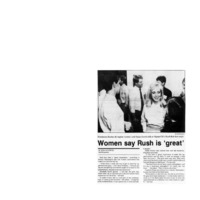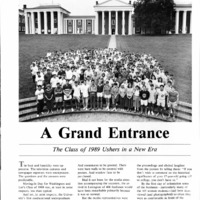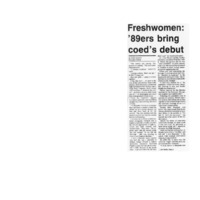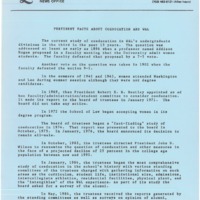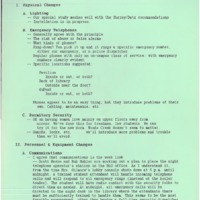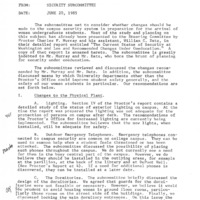Impact
Women entered Washington and Lee in the Fall of 1985. There were 105 women enrolled in the freshman class. Move-in day was filled with reporters and cameras. Most students seemed to just go with it. Washington and Lee was mentioned in news outlets like the Roanoke Times, the Washington Post, and USA Today.
Back then, formal fraternity rush took place in the fall (now it is in January). Women were invited on "rush dates" to meet other members of the community and took part in the process without actually becoming a member.
New security precautions were put into effect when women were on campus. For example, lighting was added to paths. Girls were moved onto higher floors in residence halls. Identification cards became an idea. "Common sense" was the plan.
Alumni Interviews
Price was in the class of of 1985. The consensus of coeducation while he was on campus was described as "Against but accepted it."
Price was a member of Phi Delta Theta. On weekends girls from Women's Colleges would come and party with the W&L boys. There was no thought of changing what the social life was like.
Rowan was in the first coeducated class. He played football and was a member of Phi Kappa Psi.
In his interview he talks about those women in the class of 1989, after all, he married one. Instead of being in a sorority, women picked a a fraternity to hang out and party at. The women from neighboring colleges were "non-events" since he dated Julie Salerno Taylor for the majority of their time there.
Rowan was a Dorm Counselor, now called Resident Advisor (RA), for his junior and senior year in Graham-Lee's residence hall. They resembled "Lord of the Flies" at times.
Julie was in the first coeducated class. She was the first female head of University Ambassadors and proceeded to work in the Admissions Department afrer her graduation.
It is true that these women had to be brave. Julie mentions the bumper sticker with the words, "Screw Tradition, Date a W&L Girl." Some professors were not happy with the decision. Julie talks about wearing a dress to attempt and appease him.
Dorms for Julie were not all made for women: men's bathrooms had flowers in the urinals and miraculously became women's bathrooms.
As for women's colleges, there seemed to be an "us vs. them mentality."
